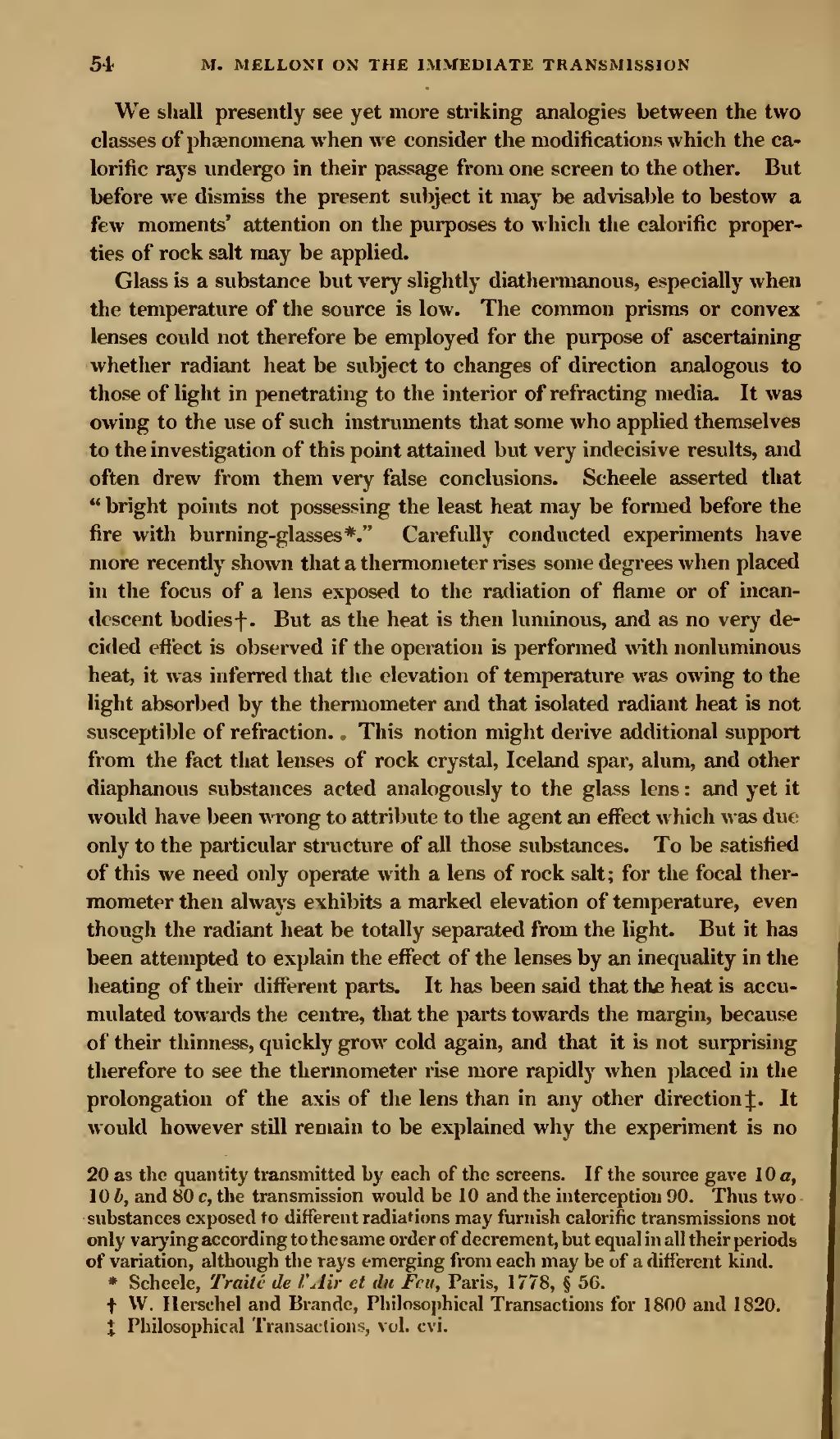We shall presently see yet more striking analogies between the two classes of phænomena when we consider the modifications which the calorific rays undergo in their passage from one screen to the other. But before we dismiss the present subject it may be advisable to bestow a few moments' attention on the purposes to which the calorific properties of rock salt may be applied.
Glass is a substance but very slightly diathermanous, especially when the temperature of the source is low. The common prisms or convex lenses could not therefore be employed for the purpose of ascertaining whether radiant heat be subject to changes of direction analogous to those of light in penetrating to the interior of refracting media. It was owing to the use of such instruments that some who applied themselves to the investigation of this point attained but very indecisive results, and often drew from them very false conclusions. Scheele asserted that "bright points not possessing the least heat may be formed before the fire with burning-glasses[1]." Carefully conducted experiments have more recently shown that a thermometer rises some degrees when placed in the focus of a lens exposed to the radiation of flame or of incandescent bodies[2]. But as the heat is then luminous, and as no very decided effect is observed if the operation is performed with nonluminous heat, it was inferred that the elevation of temperature was owing to the light absorbed by the thermometer and that isolated radiant heat is not susceptible of refraction. This notion might derive additional support from the fact that lenses of rock crystal, Iceland spar, alum, and other diaphanous substances acted analogously to the glass lens: and yet it would have been wrong to attribute to the agent an effect which was due only to the particular structure of all those substances. To be satisfied of this we need only operate with a lens of rock salt; for the focal thermometer then always exhibits a marked elevation of temperature, even though the radiant heat be totally separated from the light. But it has been attempted to explain the effect of the lenses by an inequality in the heating of their different parts. It has been said that the heat is accumulated towards the centre, that the parts towards the margin, because of their thinness, quickly grow cold again, and that it is not surprising therefore to see the thermometer rise more rapidly when placed in the prolongation of the axis of the lens than in any other direction[3]. It would however still remain to be explained why the experiment is no
- ↑ Scheele, Traité de l'Air et du Feu, Paris, 1778, § 56.
- ↑ W. Herschel and Brande, Philosophical Transactions for 1800 and 1820.
- ↑ Philosophical Transactions, vol. cvi.
as the quantity transmitted by each of the screens. If the source gave 10 a, 10 b, and 80 c, the transmission would be 10 and the interception 90. Thus two substances exposed to different radiations may furnish calorific transmissions not only varying according to the same order of decrement, but equal in all their periods of variation, although the rays emerging from each may be of a different kind.
